- Home
- Jason Webster
Violencia Page 9
Violencia Read online
Page 9
I don’t imagine the annals of history furnish an example of philanthropy so noble, so extensive as this.
Further medical advances followed. In the 1920s a Spanish military surgeon, Fidel Pagés, invented epidural anaesthetics, while during the Spanish Civil War, the first blood transfusions were carried out – developed by a Canadian, Dr Bethune (who later became a friend of Chairman Mao) – during the battle for Madrid in 1936.
And this trend continues. Today, despite deep cuts in government spending on research, Spanish investigators (and Cubans, who have picked up the baton from their former colonial masters) are at the forefront of many medical innovations. Behind them stretches a tradition laid down over a thousand years before. Al-Zahrawi would be proud of his descendants.
1 Covered in a later chapter.
RISE AND FALL
As with every regime in Spanish history, from the Visigoths to the Second Republic, the collapse of Arabian Spain came about through civil war. And, as happens on other occasions, the demise of the Umayyad regime in Al-Andalus followed very quickly on the heels of its greatest and most celebrated period. The ‘Golden Age’ of Moorish Spain was the tenth century, during the reigns first of Abd al-Rahman III and then his son Al-Hakam II. Politically, Al-Andalus showed greater confidence during this time. For a brief pause, the internal disputes and rebellions which had so dogged it from the beginning were subdued. This coincided with its elevation on the international stage: from being simply an ‘emir’, or prince, in 929 Abd al-Rahman declared himself ‘caliph’, or leader of the Islamic community, in a direct challenge both to the recognised caliph in Baghdad and the rival Fatimid caliphate which had been established in North Africa. Abd al-Rahman III was a direct descendant of his namesake who had established Umayyad rule in Al-Andalus in the eighth century, and there was a family link to the early rulers of the Islamic world. Ethnically, by this point the Arabian lineage had been watered down: the fruit of many generations of marriages with local women, Abd al-Rahman III, the greatest ruler of ‘Moorish’ Spain, had red hair and blue eyes and possibly lighter skin than many Spaniards of today.
Umayyad Spain at its height (c. 1000)
This period is celebrated now for its extraordinary cultural achievements. Cordoba became the epicentre of a spectacular flourishing of the arts and sciences which converted the city into a bright intellectual light in the relative darkness of Europe at the time. Much of the groundwork for this had already been laid thanks to the efforts of Ziryab, but we can date the start of this development to the arrival, in 949, of another Man from the East who would change the history of Spain. This time, however, it wasn’t the person himself who arrived, but his written words. In that year an embassy arrived in Cordoba from the emperor in Byzantium, and among the gifts brought were the works of the Ancient Greek physician and botanist Dioscorides. Abd al-Rahman and his courtiers were delighted: Dioscorides was highly regarded, the father of Western medicine. There was only one problem: no one in Cordoba could read Greek. What happened next set a precedent in Spain which would be followed in both Moorish and Christian contexts for the next three hundred years.
Abd al-Rahman III didn’t invent the school of translators – Baghdad’s House of Wisdom had been the centre of a translation movement almost since the city’s founding in the mid-eighth century, in which Classical Greek and other texts were translated into Arabic, thereby laying the intellectual foundations for the infant Islamic Empire. But Abd al-Rahman III did import the concept to the Iberian Peninsula, and it would go on to be echoed in the famed School of Translators in Christian Toledo of the twelfth and thirteenth centuries. The structure of the team of translators drew on one of the strengths of Umayyad Cordoba: its mixed population and policy of relative tolerance to non-Muslims. Members included the Christian Bishop Recemund, the Muslim scholar Ibn Juljul, and a leading member of the Jewish community Hasday ibn Shaprut. Further testament to the openness of the period lies in the fact that Ibn Shaprut was also personal physician to the caliph and a trusted palace official. Not only that, in a further example of the slightly blurred lines between the various religious and political communities on the Peninsula in the tenth century, he also cured the king of Navarre of obesity in 964 when he came to visit Cordoba.1
This tolerant and intellectually curious atmosphere made Cordoba the greatest city in the western Mediterranean, second only to Constantinople in terms of splendour and population (estimates vary between anything from one hundred thousand to half a million people living in and around the city at this time). In fact, Byzantium acted as a kind of midwife for Cordoba’s blossoming, not only sending the texts of Dioscorides (and, eventually, a Greekspeaking monk to help with the translating) but also artists and artisans to decorate the new buildings that were springing up in the Moorish capital: Al-Hakam II’s extension of the Great Mosque has exquisite Byzantine mosaic work around the Mihrab niche which is still visible today.
During its Golden Age, Cordoba was said to be home to eighty schools, six hundred mosques, fifty residences for the poor and orphans, and as many as nine hundred bathhouses. One of its many new libraries claimed to have up to four hundred thousand books. The streets were paved, there was an extensive underground sewerage system, and lamps at street corners and above the entrances to most houses meant there was, in effect, street lighting – seven hundred years before such a system was set up in London.
Women also enjoyed greater freedoms: one of the brightest lights of the time was Lubna, poetess, mathematician, grammarian and private secretary to the Caliph Al-Hakam II. Other women exceeding in their fields included the poetess and historian Radiya, and Maryam of Seville, who taught literature to the daughters of Cordoba’s elite.
In an atmosphere of expansion and increased possibilities, a brand new palatial city was built just three miles to the west of Cordoba: Medina Azahara (Medinat al-Zahra in Arabic) became the physical expression of the new glory of Moorish Spain, an architectural wonder designed to enrapture and impress: mirrors of liquid mercury casting lights on the ceiling of the reception hall left foreign visitors speechless, while two hundred thousand loaves every day were needed just to feed the fish in the caliph’s fish ponds.
Confident and vibrant, this culture didn’t escape the attention of Christian Europe, and it became a magnet for adventurous and inquisitive types who sought more intellectual stimulation than their own countries could provide at the time. According to some sources, the future Pope Sylvester II – then known as Gerbert – even made it as far as Cordoba ‘in search of knowledge’ (some say he never made it beyond Barcelona). Such was Cordoba’s fame that in the 950s a Christian nun from Saxony wrote about it:
The brilliant ornament of the world shone in the west, a noble city newly known for the military prowess that its Hispanic colonisers had brought. Cordoba was its name and it was wealthy and famous and known for its pleasures and resplendent in all things, and especially for its seven streams of wisdom [the Classical Trivium and Quadrivium] as much as for its constant victories.
What tells us more about Cordoba’s increasing reputation at this time is that the author of this eulogy, Hroswitha, never even went there.
Yet even as this great flourishing was reaching its highest and greatest achievements, few at the time could imagine that within a mere generation it would all lie in ruins. The light of Cordoba, like so many in Spanish history, shone very brightly, but all too briefly.
The rot set in shortly after the death of Al-Hakam II in 976. The caliph’s successor, Hisham II, was only eleven. A triumvirate was set up to rule as regent, but within a few years one of these three had despatched the other two and taken over as dictator. This man was Al-Mansur, a former high-ranking and ambitious civil servant who effectively ruled Al-Andalus until 1002. Acting in caliphal fashion, he expanded the Great Mosque, virtually doubling it in size, and built another palatial city near Cordoba to rival Abd al-Rahman’s Medina Azahara, confusingly with almost the same name – Medinat al-Zahira.
In Spain today, however, he is still remembered as the terrible ‘Almanzor’ for his repeated campaigns to subdue the small Christian kingdoms to the north: on one occasion he even reached as far as Santiago and stole the bells from the cathedral tower.
Yet despite these feats, Al-Mansur sowed the seeds which would eventually bring about the rapid destruction of Umayyad Al-Andalus. By acting as dictator he effectively reduced the caliph to a puppet figure whose prestige could never be restored. And to bolster the army he brought in thousands of troops, or mercenaries, from Berber tribes in North Africa. As long as these men were busy fighting Christians, all was fine. But they became a large and powerful presence in a society with a long history of divisions between Arabs and Berbers, the latter very much looked down upon by the former as being culturally and racially inferior.
Al-Mansur’s successor carried on in much the same vein as his father. But when he died, still quite young, in 1008, real problems began.
What followed was later termed by Arab chroniclers as the Fitna – the great strife or rebellion. Lasting from 1008 to 1031, it was, in essence, a string of civil wars with frequent and sometimes rapid changes of government, assassinations, plundering and massacres of civilian populations. The details are messy and often confusing, but as an example of the chaos that reigned at the time, one of the puppet caliphs put on the throne at one stage ‘ruled’ for less than three months before being deposed and replaced.2
Importantly, Christian rulers became involved for the first time in Andalusi politics: different kings supported different Moorish factions at various moments during the complex and very violent shifts in power. This set a precedent which would then be followed over the next five centuries.
Disaster came in 1013. For two years, Berber mercenaries fighting for one faction had been established at Medina Azahara, from whence they blockaded Cordoba. Having thoroughly looted the palatial city, they finally took the capital after an outbreak of the plague had seriously reduced the inhabitants’ resolve. On breaching the city’s defences, the Berbers continued as they had previously done across much of the Andalusi countryside: the libraries were sacked and the city denuded of its wealth. Many civilians were cut down in a frenzied massacre. One eyewitness later named as many as sixty of the city’s intellectuals who had been murdered at the time, their bodies left to rot in the street for days afterwards.
Umayyad Spain never recovered from this blow, and although it managed to stagger on for several more years, in 1031 it finally collapsed when the last caliph, Hisham III, was deposed and not replaced. Cordoba itself, its once glorious capital, lay in ruins. Despite a brief renaissance a hundred and fifty years later, it would never again be the great cultural centre it had once been.
Civil war brought Arabian Spain to an end, and with it the strong political force which had only briefly held the country together. For the next seven hundred years, Spain would exist once more only as a geographical concept, with the Peninsula breaking up into a patchwork of warring mini-states. The creation of a new political Spain would eventually require many wars, foreign intervention, and much Spanish blood.
1 Perhaps not surprisingly, back home Sancho was nicknamed ‘the Fat’.
2 There are very powerful echoes from this period in the nineteenth century, a time of great upheaval and many hundreds of rebellions and coups. These are dealt with in a later chapter.
HEROIC SPAIN
FITTING IN
Barring a handful of small Christian statelets to the north, the Arabian Spain of the Umayyads had encompassed most of the Iberian Peninsula, drawing it together as the Visigoths had done before. With the collapse of the Cordoba caliphate in the Fitna civil wars, however, the Peninsula became a patchwork of mini-kingdoms and principalities, some Muslim, some Christian, with shifting and often ill-defined borders, highly complicated alliances and rivalries between them, and always fighting among themselves. Into this state of endemic civil war – which lasted around five hundred years – entered foreign powers on all sides, both from North Africa and from Europe, intervening as they saw fit and often imposing harsher, more ‘fundamentalist’ beliefs as the price for their involvement.1 This period, often referred to as the ‘Reconquest’, would see the eventual disappearance of Moorish Spain as a political entity.
It is not common to regard the ‘Reconquest’ as a ‘civil’ war. In general, the view in Spain today is that the Moors invaded and conquered the Peninsula in the eighth century, and then over several centuries were pushed back and eventually driven out with the conquest of Granada. In this vision, the Moors are clearly ‘foreign’, and the Christians, led by the country’s Moor-Slaying patron saint, ‘Spanish’. The ‘Reconquest’ is as much to do with ethnicity as it is with religion.
The curve of conversion
It’s a convenient image which flies in the face of both historical research and common sense: two communities living side by side for almost a millennium were only ever going to integrate – at least to some degree.
The US historian Richard W. Bulliet studied the question of integration and conversion to Islam in the 1970s. Basing his research on medieval biographical records, he noticed something interesting: as a person’s lineage was traced back through the generations, at some point Islamic names gave way to non-Islamic, or pre-Islamic, ones – for example, Ali son of Muhammad, son of Ahmad, son of Umar, son of Alvaro . . . Collecting the data from these documents and extrapolating from them, he concluded that in the century between 900 and 1000 – coinciding with the Umayyad Golden Age – the number of Spanish converts to Islam leapt from around 25 per cent to 75 per cent. And while his findings were based on a relatively small number of records, they are corroborated by the various expansions carried out over roughly the same period to the main mosque in Cordoba: as the number of Muslim faithful grew, so they needed more space in which to pray.
By the twelfth century, as Bulliet’s research indicates, the vast majority of people south of the Peninsula’s religious divide were Muslims – or in other words, ‘Moors’. They were local people who spoke Arabic and prayed to Allah, yet nonetheless were Spanish. The ‘Reconquest’, therefore, if it can be seen as a whole at all, should be viewed as the slow and very staggered process of northern Spain militarily dominating the south – a civil conflict driven more by ideology than ethnicity. There were as many cultural differences between the various northern kingdoms chipping away at Al-Andalus (including linguistic ones: Basque is no closer to Latinbased Iberian languages than Arabic is) as there were separating them from their Muslim enemies.
In this light, the fall of Granada in 1492 is less the completion of the ‘Reconquest’, and more an expression of a refrain running through the history of the Peninsula in which one ‘Spain’ fights to dominate and ultimately annihilate another ‘Spain’ (in the twentieth century, Franco fitted this pattern neatly when he labelled his Republican enemies the ‘anti-Spain’). The conquest of Granada may have been seen as a triumph at the time and the culmination of the ‘re-Christianisation’ of the Peninsula, but as in the tale of Heracles – that other Spanish patron saint – and the Hydra, the severing of one head only produced others: as the history of the country shows, the ‘other Spain’, however it is defined, can never be definitively killed off and always rises again in some form or another.
Yet despite being a period of constant warfare and violence, the crucible that is Spain continues to bubble, and the ‘Reconquest’ also sees some of the greatest cultural achievements in the whole of Spanish history. This is a time of heroes, some Christian, others Moorish. All of them will have an enormous impact not only on Spain itself, but also on the rest of the world.
1 Something similar occurred during the Civil War of the twentieth century, when the Republic paid a very high price for Stalin’s support. Imported Soviet-style paranoia and purges form the backdrop to the left-wing repression George Orwell chronicles in his Homage to Catalonia.
PARTY TIME
Minutes before I
started writing these words, a new prime minister was installed in Spain – Pedro Sánchez, a man accustomed to fighting many political battles, despite his youthful appearance. Spain is going through turbulent times; its very existence as a nation is under threat. And as it does so, parallels are naturally drawn with a period in the distant past, one which continues to resonate many hundreds of years on. This is the period of the taifas and the complex and often chaotic events of the eleventh century.
Less than half an hour into office, and Pedro Sánchez has been compared to El Cid, the most renowned figure from the period (thanks, not least, to Charlton Heston and Sofia Loren). We’ll come back to the Cid and his story. For now, let’s concentrate on the taifas.
Like the Fitna which led to the breakdown of central Umayyad authority, taifa is an Arabic word. It is used to describe the many different mini-kingdoms into which Al-Andalus broke up in the 1000s. The fact that journalists and others still use the word today is testament to the fact that this was no isolated period in Spanish history, but rather a tendency, an ever-present threat to the political unity of the country.
The Umayyads had lost power long before the last of them was overthrown. But even stripped of real authority, their mere presence as caliphs could act as a unifying idea: they formed a blood link to Mecca and the Umayyad caliphs of Damascus, a lineage of legitimacy which served as a symbolic reminder of national unity. But with the last of them gone, and no strongman or dictator like Al-Mansur capable of holding the centre, Moorish Spain inevitably splintered into its constituent parts. The reality of the nation – a conglomeration of regions both connected and divided by geography – asserted itself. And from a society which had grown comfortable and even ‘soft’ with its high cultural achievements, it was impossible to find the necessary martial will or energy to pull it back together.

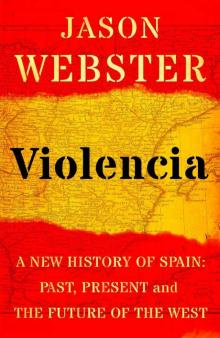 Violencia
Violencia Or the Bull Kills You
Or the Bull Kills You The Killing of El Niño Jesús
The Killing of El Niño Jesús The Spy with 29 Names
The Spy with 29 Names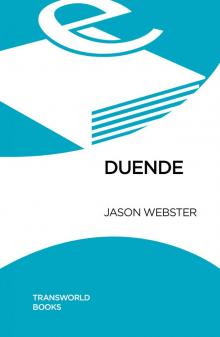 Duende
Duende Guerra
Guerra Sacred Sierra
Sacred Sierra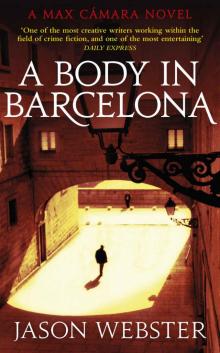 A Body in Barcelona: Max Cámara 5
A Body in Barcelona: Max Cámara 5 Fatal Sunset
Fatal Sunset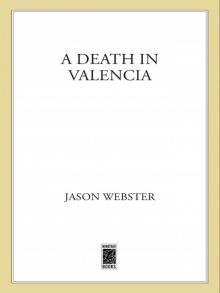 A Death in Valencia
A Death in Valencia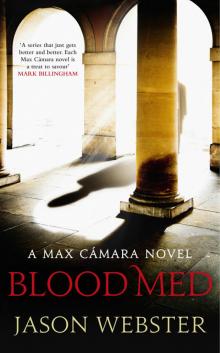 Blood Med
Blood Med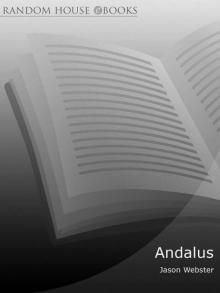 Andalus
Andalus